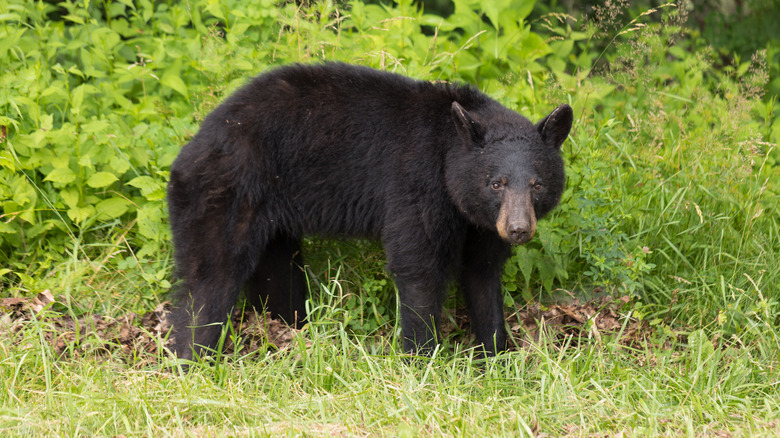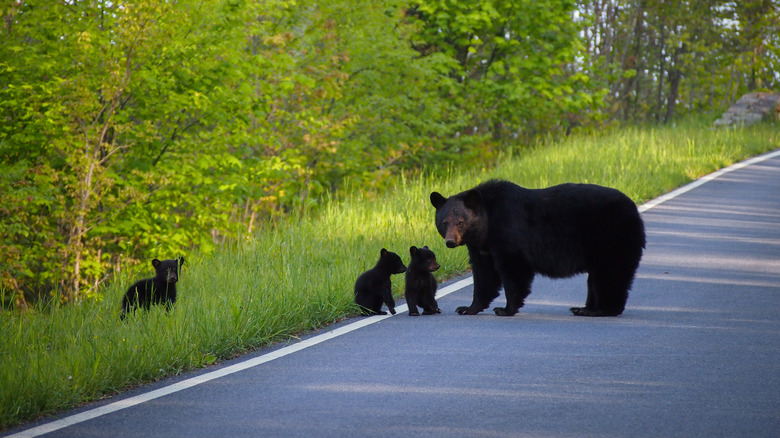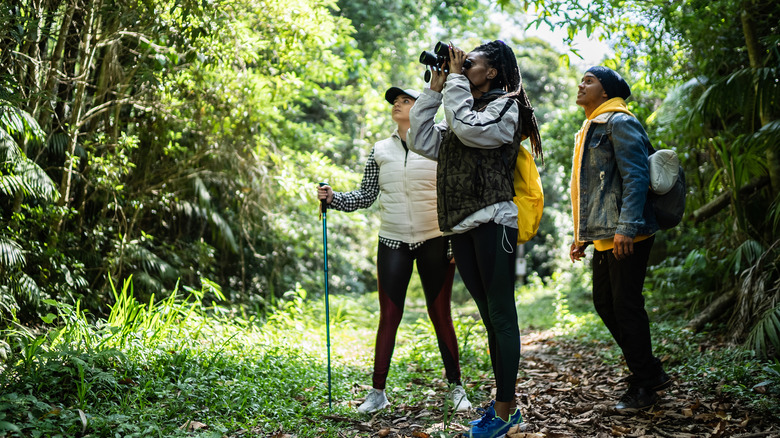Catch A Glimpse Of Bears And Other Incredible Wildlife At This Beautiful National Park
Shenandoah National Park is a stunning and vast park in Virginia, about 70 miles west of Washington, D.C. Spanning over 197,000 acres of protected land, it showcases breathtaking views of the Blue Ridge Mountains and provides a sanctuary for wildlife. The park is known for over 500 miles of hiking trails, the popular Skyline Drive, and massive waterfalls. But one of its main highlights is the diverse wildlife population.
The park has a thriving population of black bears, with an estimated 200 to 1,000 bears living within its boundaries, according to the Shenandoah Valley Travel Association. These majestic creatures can be spotted throughout the park, foraging for food or lounging in trees. They are mostly shy animals that avoid human contact. However, visitors to Shenandoah National Park can catch a glimpse of these magnificent creatures if they are lucky.
Shenandoah's black bears come in various sizes, with adult males typically larger than their female counterparts. These magnificent creatures can range from a petite 100 pounds to a colossal 300 pounds or more, according to the National Park Service. Spotting a robust male bear lumbering through the forest or a mother bear and her cubs exploring their surroundings is a testament to the park's diverse bear population.
The best ways to spot a black bear in Shenandoah National Park
One of the best ways to see bears in the park is by driving along Skyline Drive, a 105-mile stretch of road that runs through the entire length of Shenandoah National Park. The Dickey Ridge Visitor Center at mile 4.6 on Skyline Drive keeps wildlife sighting logs, so you can check out the most recent sightings on your way into the park and plan your drive based on this information. Skyline Drive offers over 75 overlooks and pull-offs, access to 500 miles of hiking trails, and numerous opportunities to spot bears in their natural habitat.
In the park's Central District area around the halfway point on Skyline Drive, the Big Meadows area provides some of the best opportunities to spot a black bear. At mile 51, the Big Meadows campground, lodge, and picnic area can be an ideal place to stop and rest. Bears have been spotted foraging around the area's campground and lodge. Remember that proper food storage is vital to prevent attracting bears to campsites and picnic areas, so the park requires the use of bear-resistant containers in these areas.
To increase your chances of spotting a bear, timing is crucial. If you're not camping, head to the park during the early morning or late evening, when bears are most active. Although these creatures can be seen throughout the day, they tend to be particularly active during these times.
Observing the variety of wildlife in Shenandoah National Park
In addition to the thriving black bear population, the park's three districts are home to a wide variety of wildlife, including 190 bird species, more than 50 species of mammals, and numerous reptiles and amphibians. The most common mammals in the park include white-tailed deer, bobcats, and coyotes. Other notable species, like the big brown bat, tend to be more elusive due to their nocturnal nature. Safety is important when hiking and viewing wildlife, and visitors are reminded to keep a safe distance from animals and avoid feeding them.
Around 93% of Shenandoah National Park is covered in forest land, making it a popular destination for birdwatchers. According to the National Parks Service, there are seven designated birding and wildlife viewing sites in Shenandoah. These trails include popular hikes like Fox Hollow Trail, Stony Man, and several others.
Some of the most sought-after bird species in the park include up to eighteen warbler species, red-tailed hawks, barred owls, and wild turkeys. The Big Meadows area of Shenandoah National Park is known for being a prime area for finding these and other species. Winter is also a popular time to visit the park for birdwatching, as many species migrate through Shenandoah. The winter wren and American woodcock can be spotted during this time, along with nearly 73 other winter species.


